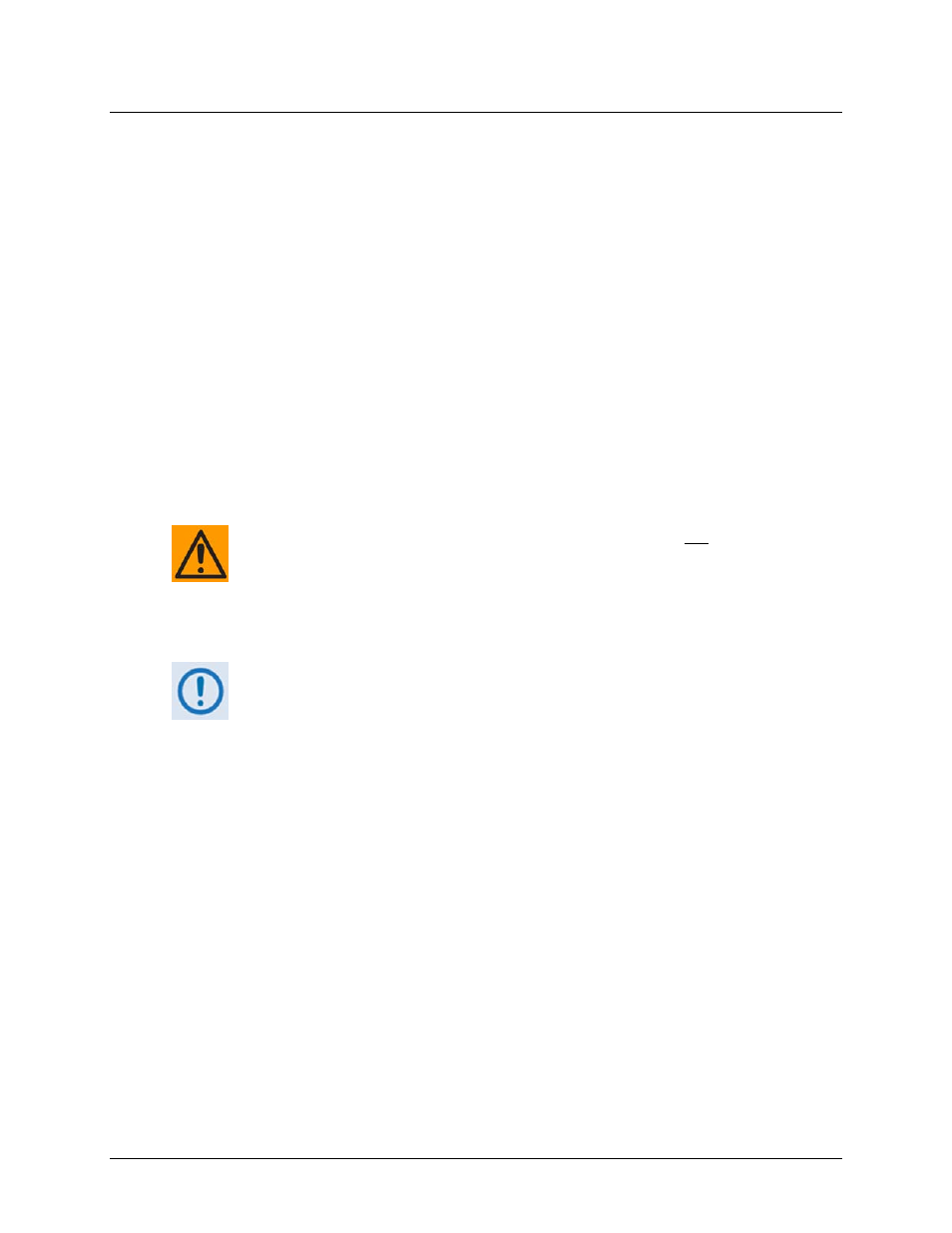4 if cable connections, 1 if cabling overview, 4 if cable connections 4.4.1 if cabling overview – Comtech EF Data CRS-500 User Manual
Page 89

CRS-500 1:N Redundancy System
Revision 2
Cables and Connections
MN-CRS500
4–33
4.4 IF Cable Connections
4.4.1 IF Cabling Overview
For hub applications, there are two basic IF configurations – single transponder or multiple
transponders:
• For a single transponder configuration, connect all modems to the same Up/Down
Converter. This configuration eliminates the need for an IF Switch Unit (ISU) because the
CRS-500 mutes (shuts off) the offline modem’s Tx IF carrier.
• For a multiple transponder configuration, you may group and connect the modems in
various combinations to multiple transponders. This configuration requires the use of
ISUs.
For either configuration – once all CRS-500 1:N Redundancy System connections have been
made, and proper system operation has been verified, the user-provided Up and Down
Converters should then be connected.
To prevent unintended signals from reaching the satellite, do not connect the IF to
any Up Converters until the CRS-500 1:N Redundancy System is fully cabled and
configured.
4.4.2 IF Cable Connections – Single Transponder (No ISUs)
To prevent problems resulting from impedance mismatch, ensure that the
impedance for the modem’s cables and combiner are the same.
Figure 4-12 shows an example of a single transponder IF configuration (L-Band operation is
depicted in this example). Connect the user-provided IF cables as follows:
For Transmit (Tx) IF Connections:
• Connect the appropriate user-provided IF cables from each modem’s “Tx IF” connector
(BNC for 70/140 MHz, Type ‘N’ for L-Band) to a single user-provided power combiner.
• Connect the output of the power combiner to the user-provided Up converter.
For Receive (Rx) IF Connections:
• Connect the appropriate user-provided cables from each modem’s “Rx IF” connector
(BNC for 70/140 MHz, Type ‘N’ for L-Band) to the output ports of a single user-provided
signal splitter.
• Connect the input of the signal splitter to the output of the user-provided Down
Converter.
